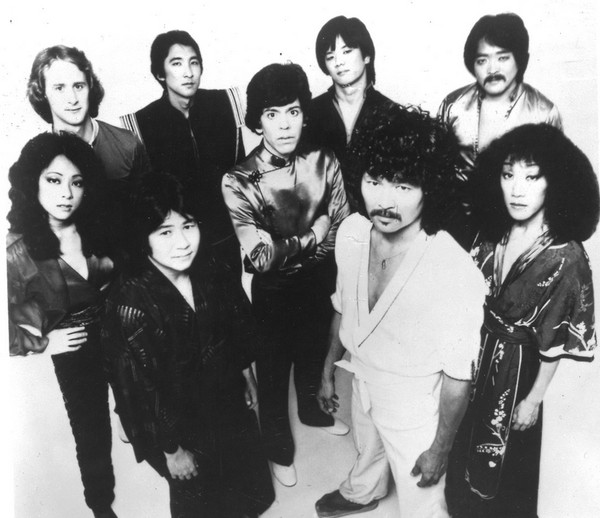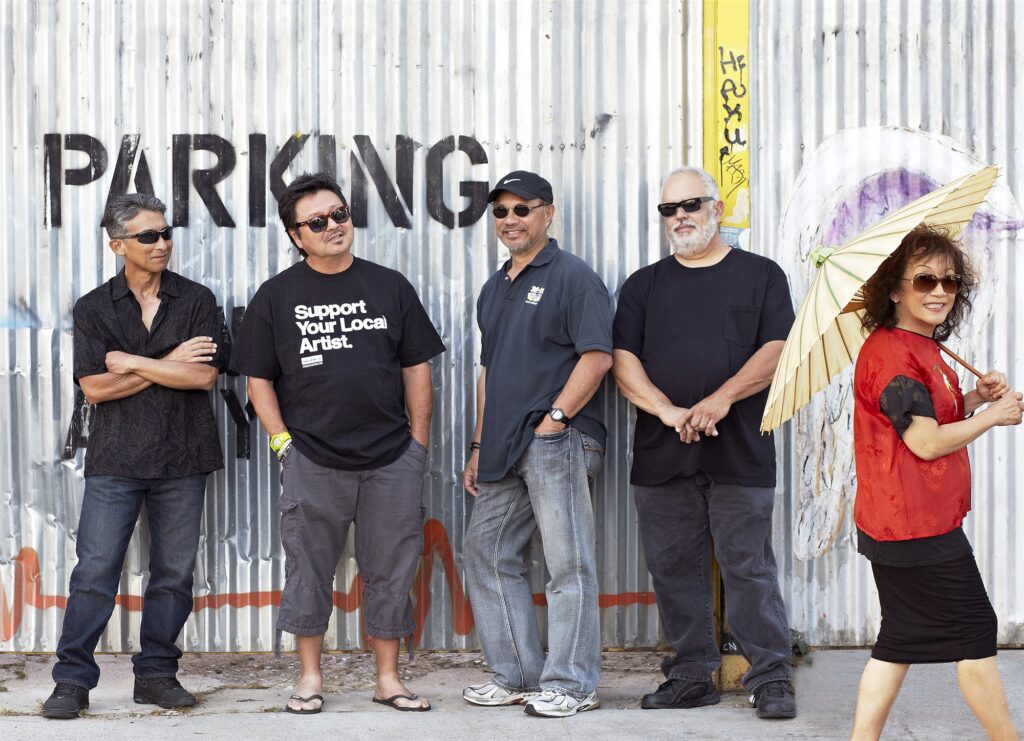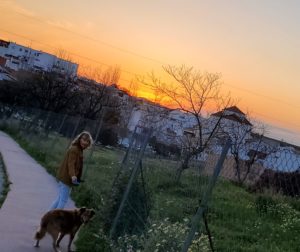Our Spain Pilgrimage continues to provide the fertile soil from which many new tender plants are germinating! Consider these pictures of the famous Mezquita in Cordoba, Spain as I share what has been germinating for Jon.
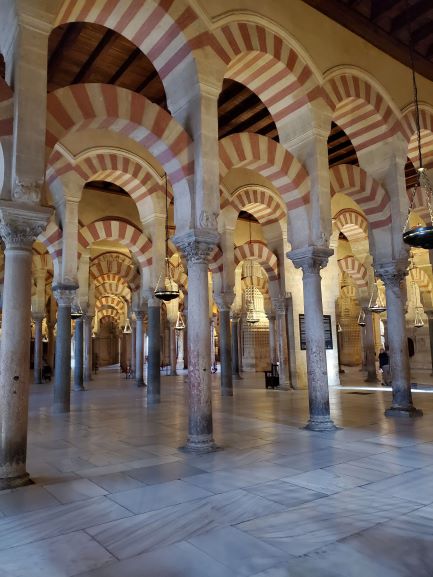
For me, these pictures reflect dualistic (us-vs.-them) realities: a Christian cathedral vs. a Moslem mosque, an ornate bright and soaring space vs. a dark, geometrically precise, lower and expansive one.
However, if you were to walk toward the light in the picture below,
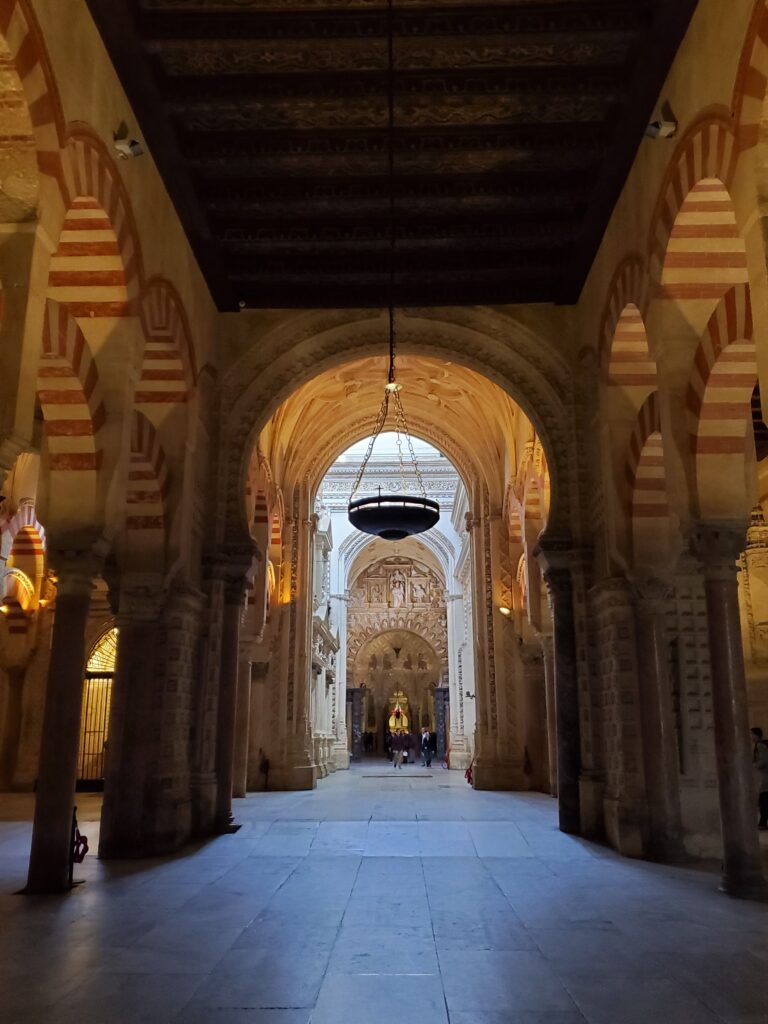
Walking toward the light…
look what you see when you arrive:

Mezquita: non-dual union!
What appear to be very distinct structures are in fact part of a single structure! They are the artifact of a respect between Christians and Moorish Muslims. After the Christians freed Cordoba from the Moors, they were so taken by the beauty of the Mezquita that they chose to preserve it when they erected the cathedral within the Mezquita in Cordoba.
This rich fabric of Spanish history—the melding of Moorish and Spanish cultures in the Andalucian region where we spent most of our time—continually opens our eyes to all that we have been experiencing since returning to the States in late March. Like Spain seven centuries ago, the U.S. is undergoing a much needed dualistic clash of races awakening to egregious injustices.
This long pause since our last blog in May echoes what’s going on in the States. Like most Americans, we have been struggling to grasp the senseless murder of George Floyd and the ensuing protests for racial justice. According to Pew Research, “two-thirds of U.S. adults say they support the movement” [Black Lives Matter] including the majorities of Black, White, Latinx, and Asian Americans.”
What do we, as Papa’s Home International, feel our response needs to be?
We have been taking time to begin with self-understanding. To go back to the pictures above, it’s as though before May 28 we had been basking in the glorious light cathedral while ignoring the massive mosque that surrounds it, that provided the foundation for its creation. It’s as though we had been sleep-walking through the mosque every day, only to awaken in the cathedral. Since May 28, all Americans are being asked to understand “white identity” so we can understand “black identity” or in my (Jon’s) case, Asian-American or, more specifically, Japanese-American identity. Whites are now being asked to do what all of us people of color (POC) have had to do all our lives: clarify who we are and where we stand in relation to the dominant paradigm of white culture. So Susie and I have been on a journey to understand both White and Black history and BIPOC [Black, Indigenous, People of Color] identity so that we can join in doing our small part to rectify racial injustices.
So I appreciate the question a friend asked me a few weeks ago,
“So Jon, how do you see yourself? As white or more as a POC?”
Her question became the launching point for my realization that all people have a need for self-definition, self-determination. I’d like to share an expanded response to her powerful question:
My maternal grandparents began their life as a couple in 1924. Grandpa had been in the US since 1904, returned to Japan to marry the girl next door. Once they landed in Seattle, they were migrant farm workers: they worked their way south from Seattle, Oregon, and through the Central Valley until they arrived in Los Angeles. My mother and her family were interned in WWII in Manzanar in the Mohave Desert. Upon leaving the internment barracks, they were forced to move to the East coast; under the War Relocation Authority, my mom’s family worked in the BirdsEye frozen food plant in Seabrook Farms, New Jersey. As the war wound down, they were finally allowed to return to the West coast to start life over again.
My fraternal grandfather was the foreman on a sugar cane plantation on the Big Island in the then U.S. territory of Hawaii in the 1920s. My dad grew up and worked on the plantation. He “escaped” to do his undergrad work at the University of Hawaii in Honolulu. A gifted athlete (later he was on John Wooden’s UCLA freshman basketball team), he had aspired to be a gym teacher. As the war was winding down, he enlisted and worked as a medic. Discovering a love for medicine, he finished his BS at UCLA under the GI Bill. He also discovered my Mom, a West L.A. girl, courted her and married her in a Japanese Methodist church. Dad then went on to get his MS and PhD in immunology.
I was his birthday present, born in So Cal three days before his 30th birthday. My early childhood was a happy one traversing two worlds: during the week I was at a largely Jewish/Anglo elementary school at UCLA and spent the weekends with extended family, Japanese school, or my Japanese American church community.
My sister came along seven years later and Dad moved us to Hawaii: he felt he had hit a glass ceiling at UCLA and had the opportunity to get on the tenure track to full professorship at the new medical school at the University of Hawaii in Honolulu. From my point of view, Honolulu was, during my growing up years, still strongly influenced by white Republican plantation interests. In reality, the mostly Japanese American post WWII generation led a 1954 “Democratic revolution”, and led a coalition of other Asian Americans to dominate island politics and education.
So my experience in Honolulu was being part of this implicit dominant culture in Hawaii. Being at an elite Episcopal boys’ college prep school, I was sheltered from much of the mostly good-natured ethnic tensions among Japanese, Chinese, Filipino, Native Hawaiian, and Samoan communities.
During my undergraduate years at UCLA during the mid-1970s, I met many Japanese Americans who grew up in the primarily Black neighborhoods of Crenshaw/Watts. Many of them had adopted a “Japanese American Power” identity akin to the “Black Power” movement. (Yes, I saw the bullet holes in buildings near where Black activist Angela Davis had spoken). Their experience growing up in the shadow of WWII internment and oppressed minority status in Los Angeles was very different from mine in “Paradise.” I had been in the cloister, so to speak, as if I had been sleep-walking to the cathedral through the mosque courtyard where my L.A. friends had spent their lives.
Japanese Americans and many Asian Americans share the double-edged moniker of being the “model minority”—even out-whiting whites in education and income. So I share in the blessings and shortcomings of “white identity” –I have been pejoratively called a “banana”—and have had an implicit bias of power and social correctness. My relationships with LA Japanese Americans growing up in the Crenshaw/Watts neighborhoods opened my eyes to my “wrong/banana” way of looking at the world. Much of my later twenties was making sense of my own Japanese American experience, learning a bit of the Japanese language, and always loving Japanese foods with a strong Hawaiian multi-ethnic flair.
So with our Black brethren, I acknowledge that I am somewhere between them and the White community. I identify with and have com-passion for my Indigenous and POC brethren because I have experienced the pin-pricks of microaggressions and elusive but very real structural injustices. Perhaps because I grew up in both Hawaii and California, I can see both the White and Black sides with empathy and compassion.
So what is ours to do as Papa’s Home International ?
Our marriage, Susie as White and I as Japanese American, is itself a prototype for what we want PHI to be: a place where all people can have a safe space of love and compassion to journey toward love, toward experiencing what Thomas Merton has called the True Self.
We fell in love with Cordoba. We can imagine that Teresa, as a convert from Judaism, still remembered the extraordinary atmosphere of centuries long peaceful co-existence among Muslims, Christians and Jews . Post-Reconquista, Christians showed the Moors respect and admiration—they chose to preserve the beauty of the exquisite Mezquita. The Christian church thrived within the mosque and the two buildings together create a nondual, symbiotic whole.
Over the summer, I learned about Be the Bridge, an organization dedicated to catalyzing an atmosphere for inter-racial understanding. Let’s hear from one man who’s on the journey of listening to BIPOC as brothers:
In this New World of deepening virtual relationships, groups like this can help all of us on this journey toward racial justice. Let’s discover together what a symbiosis of Black and White and IPOC as a single community might look like. Let’s take the lesson from Cordoba’s Mezquita Cathedral so that we might cultivate these tender plants of justice in this season of pandemic.
YOUR TOOLKIT: Whatever our experience of race, if we have unresolved pain or color-blindness or other forms of denial, it will either have been transformed or it will be transmitted. I encourage you to take some time to journal about your sense of racial identity or lack thereof. Is there a part of Jon’s story you resonate with? What have your BIPOC experiences or relationships been like? How is that similar to or different from others you grew up with? What would you want to leave behind or see transformed from your past? What one thing is yours to do going forward?
![Cordoba Mezquita Epiphany: My [White?] Asian-American Identity](https://papashomellc.com/wp-content/uploads/2020/09/Mezquita-Altar-SQ-S-ILRcr6Bw.jpeg)
